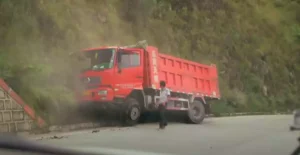
Driving trucks in the US is not as rosy as portrayed in reaility truck shows.
Truck drivers are suffering in the world’s two largest economies. SATrucker highlights the main issues raised by truckers on social media platforms in the US and China.
Harsh realities in the US
Despite Americans’ love affair with reality truck shows like Ice Road Truckers, Highway Thru Hell, Big Rig Bounty Hunters, Shipping Wars, World’s Toughest Trucker, and Mud Mountain Haulers, it seems fleet operators do not value the 3,5 truck drivers in the US.
Chronic underpayment of drivers has caused an average industry turnover of 100% and at the most exploitative companies, the same driving job can be advertised three times a year as drivers resign in disgust after spending long hours on the road for less pay than what a MacDonald burger flipper earns.
This chronic underpayment is the basis of the purported national driver shortage in the US. The truth is that hundreds of thousands of new drivers qualify each year in the US, but very few choose to stay on the job.
This is because with rare exceptions, truck drivers in the US are not listed as employees at the companies they drive for, but as “contractors” who are paid by the mile. Good examples of this type of exploitation are the “contracted service providers” at FedEx and Amazon’s “delivery service partners”.
Being paid by the mile means the hours standing at loading docks are all unpaid. These waits have just increased in recent years, despite more digital freight platforms being used. Social media platforms are full of reports by drivers who complain about having to wait 19 hours – all unpaid – at loading docks, waiting on the dispatcher to call.

When drivers finally get underway, the time they lost means they can’t afford to stop. For many drivers, this means peeing in a bottle and in the case of FedEx last-mile delivery drivers, buckling their seat belts behind their backs to save a few seconds at each stop. This constant rush has statistics now showing 5,000 deaths involving large trucks a year in the US, with 13 Amazon drivers involved in fatal crashes since 2020.
To make matters worse, the fine print in the contracts for Amazon’s “delivery service partners”, aka drivers, state they are responsible for everything that goes wrong on the road, including paying Amazon’s legal bills in case a crash goes to court.
Exploitative work contracts are at the heart of all driver’s woes in the US, but among these, lease-to-own contracts are the worst. On top of charging drivers for a truck they do not own, these predatory lease-to-own contracts see companies also charging drivers for anything from parking the truck at the company yard to – in one infamous case – using the company’s toilet paper.
A negative spiral in China
But in the US, less greedy fleet operators are slowly starting to pay their most experienced drivers as managers of multi-million dollar rigs and loads – including Amazon. This is not the case in China, where truck drivers are struggling to survive amid “a negative spiral of oversupply and falling prices”.
Online news channel China Undercover reported on 7 March 2024 that a “total oversupply in all sectors” against falling consumer demand have seen revenues of Chinese logistics companies fall by 30% compared to 2022, with freight rates still in free fall. Short haul rates are down 80% on 2022 amounts and drivers say even the 20% they hoped to get, are often delayed – or just never paid.
China Undercover reports the Chinese truck fleet shrunk by 66,000 vehicles during China’s harsh lockdown in 2022, with nearly 200,000 trucks taken off the roads. But years of government-subsidised over-investment still sees too many trucks chasing too little cargo in China, despite parcels being piled up “like mountains” at express delivery depots.

Drivers report they can wait two weeks for a load. When they have a load, they face paying bribes to be allowed in at depots, on top of no safe parking for their trucks en route and what tourists describe as the filthiest ablutions on Earth.
In both the US and China, the government departments of transport and labour have started committees to “study” the issues raised by truck drivers. But until such time as no drivers want to do the job and grocery shelves run empty, society will continue to attach no value to the drivers who make those deliveries.





